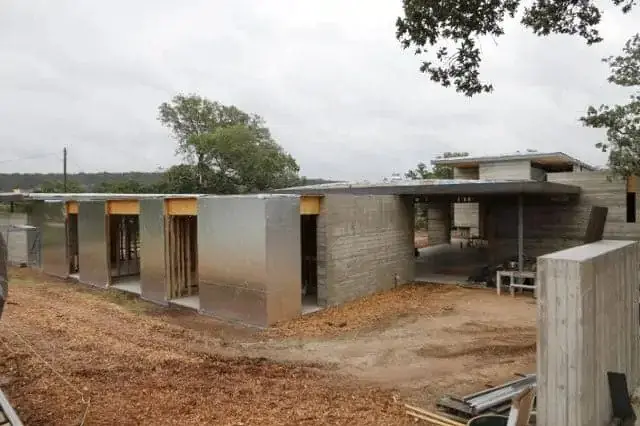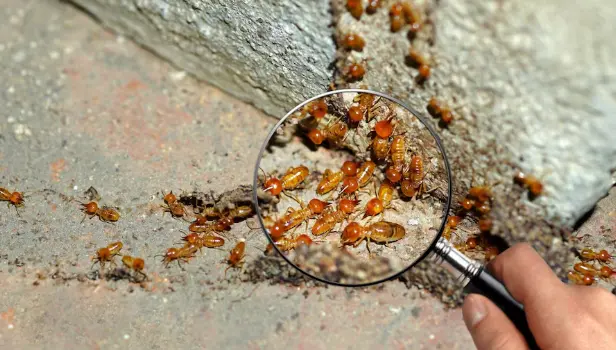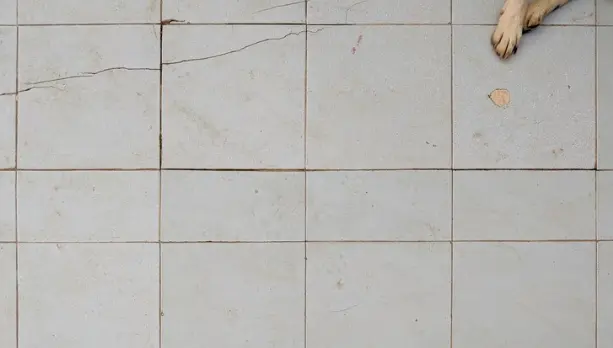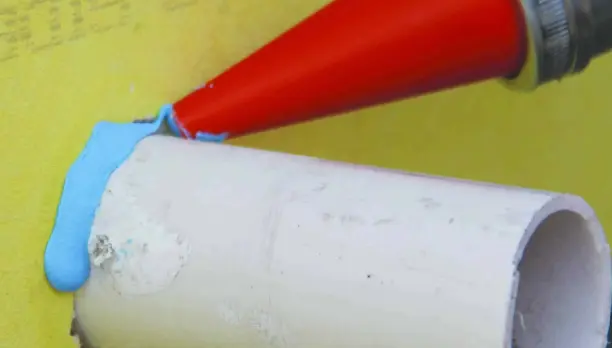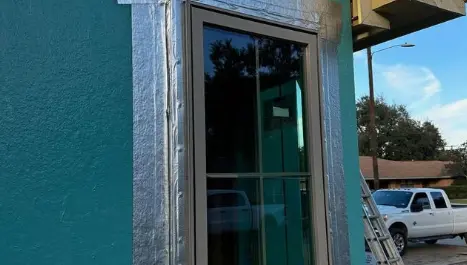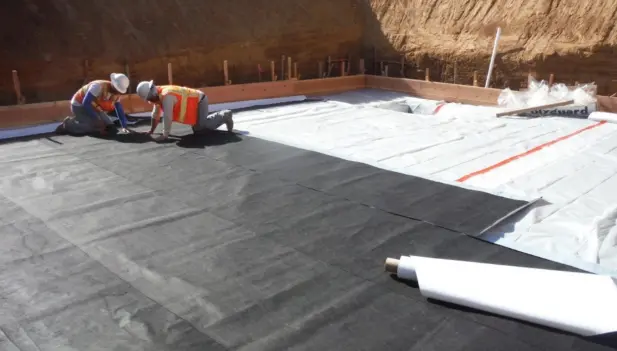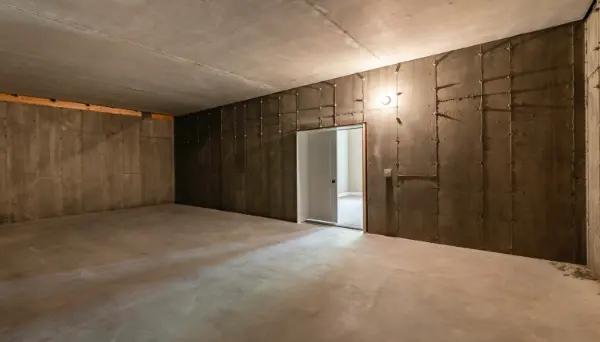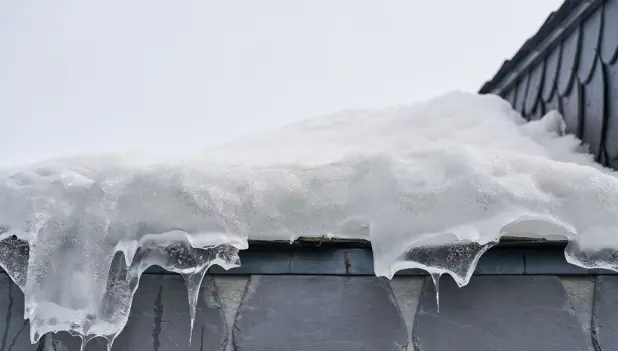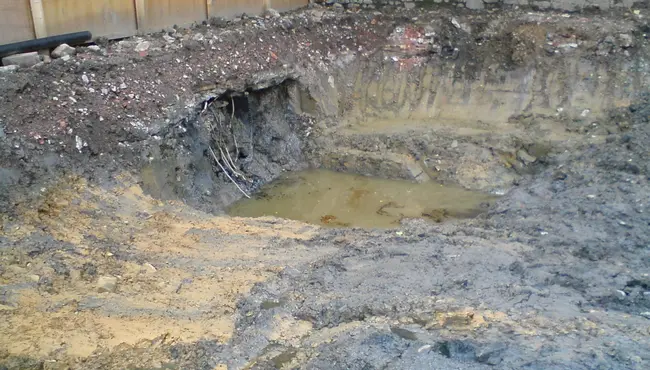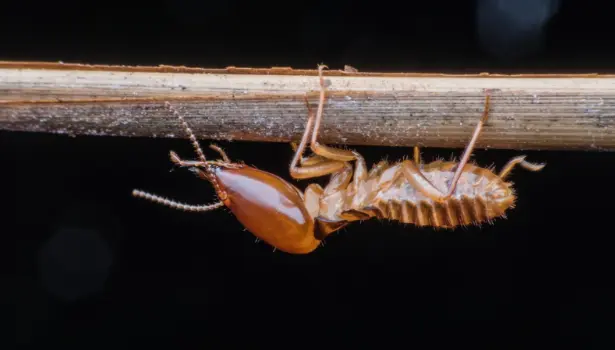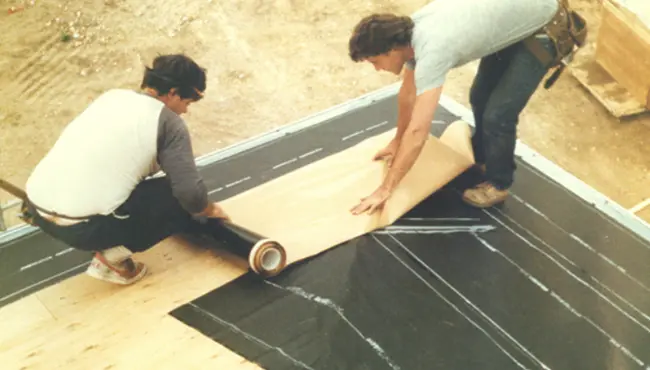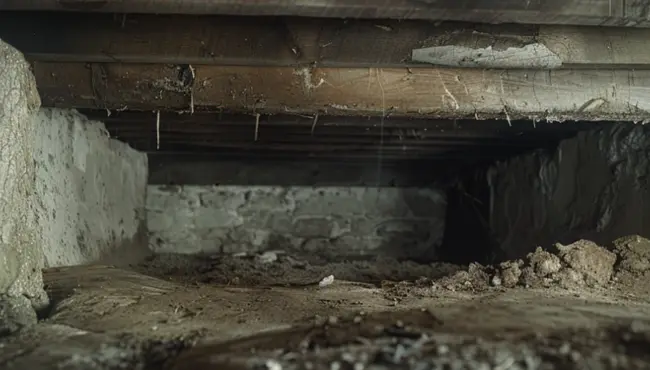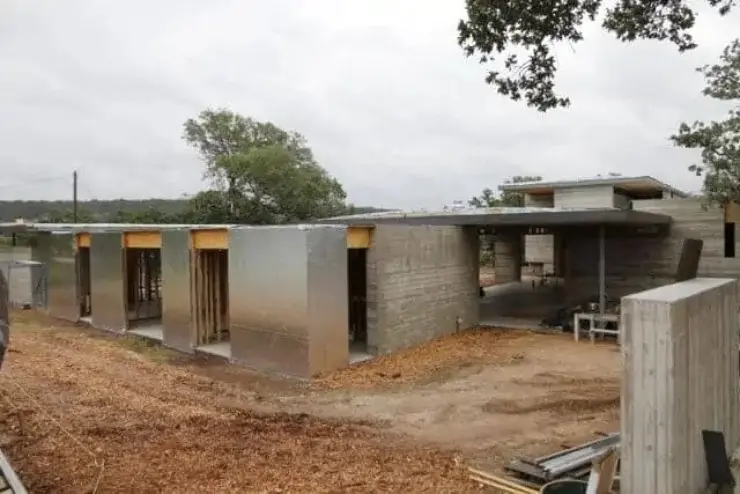
Choosing a suitable ICF vapor barrier contributes to an Insulated Concrete Form building's durability, indoor environmental quality (IEQ), and energy efficiency.
Professionally installed vapor barriers (retarders) stop water vapor from infiltrating a building envelope, provide damp proofing and enhance the energy efficiency, comfort, and long-term integrity of a commercial building or home. In addition, vapor barriers for ICF construction can prevent or minimize condensation, which can lead to damaging mold and threaten the effectiveness of the insulation.
For ICF construction, builders typically can choose from several vapor barrier products:
Self-adhered or peel-and-stick waterproofing membranes, like Home Stretch™ 'Peel' N Stick/ICF for below-grade ICF walls and Polyguard Aluma-Flash for above-grade ICF wall openings
Liquid applied vapor barrier for ICF
Liquid flashing for ICF
However, builders often prefer easy-to-apply, peel-and-stick for the uniform surface it creates.
What is a Vapor Barrier?
Vapor barriers prevent or minimize vapor diffusion, a process in which moisture flows from a higher moisture concentration space to a lower concentration area. It also happens when moisture moves from a warmer to a colder place within a building product, like insulation. Vapor barriers stop diffusion, while vapor retarders only hinder vapor diffusion.
The ASTM E96 desiccant method determines a building product's ability to stop moisture from flowing through it, BY assigning it a vapor retarder (barrier) class:
Class I vapor barrier - 0.1 perms or less
Class II vapor retarder - 0.1 < perm <1.0 perm
Class III vapor retarder - 1.0 < perm <10 perm
Do You Need a Vapor Barrier?
Commercial and residential structural systems prone to direct contact with water need a vapor-resistant barrier. Polyguard suggests you contact your building inspection office for local guidance on vapor barriers.
Where to Install Vapor Barriers
Above-Grade Vapor Barriers
Building experts typically recommend installing vapor barriers on the wall's most moist and hot side - the outer surface in humid, hotter climates and the inner surface in cooler climates.
Below-Grade Vapor Barriers
Placing a vapor barrier over the exposed soil in crawl spaces will help control moisture intrusion. In addition, vapor barriers placed under the floor's underlayment can prevent or slow moisture in a concrete subfloor from damaging the floor, particularly when installing flooring over porous concrete in damp-prone below-grade spaces.
Code Requirements for Vapor Barriers
The 2021 International Building Code IBC 1404.3 and the 2021 International Residential Code IRC R702.7 demands Class I or II vapor retarders and barriers inside framed walls in climate zones Marine 4 and 5, 6, 7, 8. However, hot, southern climate zones 1, 2, and 3 do not require vapor barriers and retarders.
However, because of soil exposure, ICF foundation walls require added waterproofing steps, unlike above-grade walls. Both the 2021 International Residential Code IRC R703.1 and the 2021 International Building Code IBC 1404.2 requires an air barrier or a weather- or water-resistive barrier on a solid monolithic concrete wall, like ICF.
Why ICF Foundations Need Waterproofing Barriers
ICF foundation walls require a waterproofing membrane and a reliable drainage system to lessen the possibility of moisture intrusion from soil and water. Builders commonly prefer self-adhered or peel-and-stick waterproofing membranes to waterproof ICF foundation walls over liquid-applied waterproofing membrane ICF.
Easy-to-apply peel-and-stick waterproofing membrane peel barriers provide a uniform surface due to factory-set thickness dimensions. In addition, they do not require fastening and taping.
A high-quality peel-and-stick waterproofing barrier for ICF foundations, like Poly Wall®'s Home Stretch™ 'Peel' N Stick/ICF Waterproofing membrane, will provide long-term performance, adhesion, and durability through proper application.
It’s important to know that a strong adhesion requires a clean and primed substrate. A firm bond also requires installers to roll the membrane and remove any bumps. In addition, an application of a dimple drainage board over the membrane offers protection and hydrostatic pressure relief.
Poly Wall® Home Stretch™ ICF Foundation Waterproofing Membrane
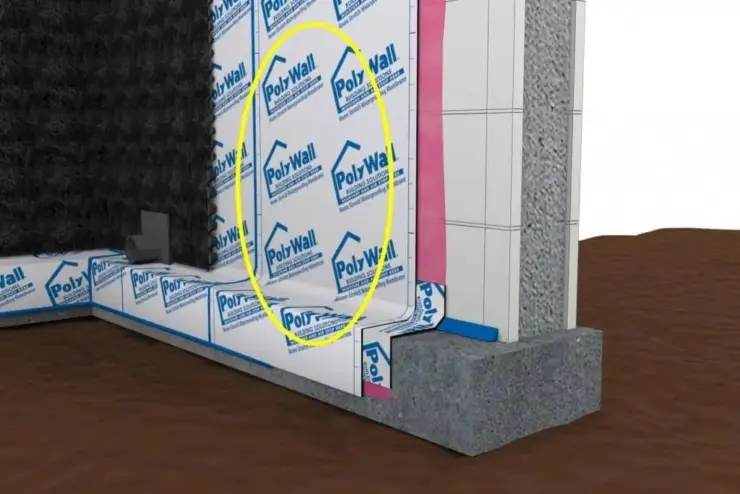
Poly Wall® engineered Home Stretch™ 'Peel' N Stick/ICF Waterproofing Membrane specifically for ICF home and building foundation walls.
Flexible and robust self-adhering Home Stretch™ ICF, 40 mils thick sheet waterproofing membranes consist of high-density polyethylene (HDPE) facing bonded to a rubberized asphalt waterproofing compound. Home Stretch™ ICF comes in 36-inch wide by 66.7-foot long rolls for straightforward handling and application, with an expendable treat release liner.
Poly Wall® Home Stretch™ Advantages
USA-made and employee-owned Poly Wall® offers over 60 years of high-quality waterproofing experience to ensure long-lasting protection for below-grade ICF, poured concrete, and concrete masonry unit (CMU) walls. Builders can also use it for areas with positive-side hydrostatic pressure or in critical need of waterproofing. Benefits of Poly Wall® Home Stretch™ include:
Starts waterproofing immediately after installation
Side lap design more effectively delivers water tightness
Offers excellent durability, puncture resistance, and tensile strength, durability
Extended selvage edge for asphalt-to-asphalt adhesion at the seam
Factory-controlled manufacturing offers 40-mil uniform and consistent thickness
Release film protects the adhesive layer and does not easily tear
Used with Polybond Clear Liquid Adhesive, builders can apply Poly Wall® Home Stretch™ in frigid weather (25℉ and greater)
Lacks V.O.C.s and does not produce odors
Poly Wall® Home Stretch Companion Products
Home Stretch™ ICF, used with our other waterproofing products (Home Stretch™ Water Based Liquid Adhesive, Poly Wall® Home Stretch™ Detail Tape, Poly Wall® Blue Barrier™ Gap Filler2200, and Poly Wall® Arroyo™ Drain Board), produces a complete and an effective waterproofing system for ICF, CMU, and poured concrete below-grade walls.
Poly Wall® Home Stretch™ Water-Based Liquid Adhesive
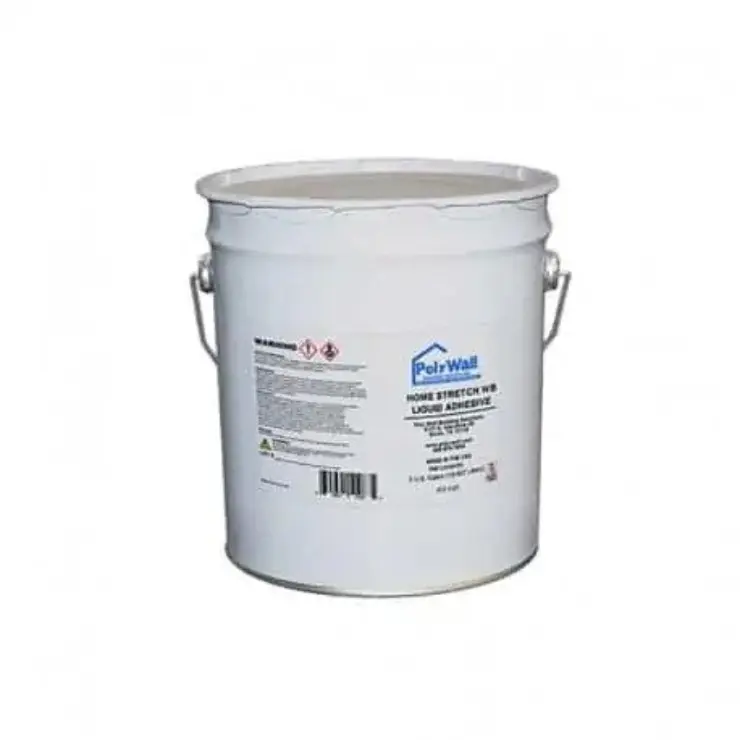
Poly Wall® Home Stretch™ Water Based Liquid Adhesive provides excellent adhesion with all the Poly Wall® waterproofing and flashing membranes under various surface conditions. The liquid adhesive applied to dry, dust- and frost-free surfaces conditions the substrate before applying Poly-Wall® Self-Adhering Membranes and Flashings.
Poly Wall® Blue Barrier™ Gap Filler2200
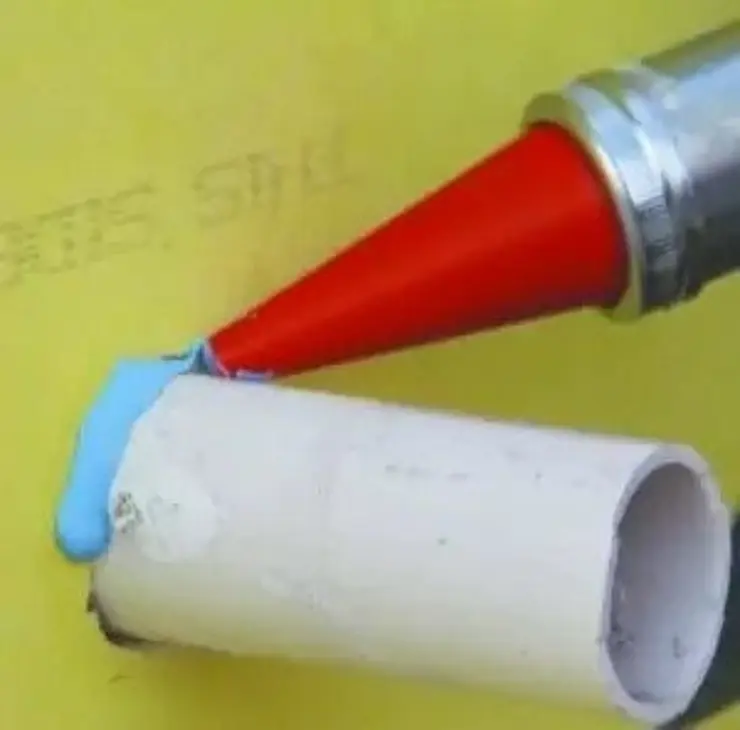
Poly Wall® Blue Barrier™ Gap Filler2200 is a structural adhesive and detail sealant used to caulk seams and voids and bond dissimilar products.
Poly Wall® Arroyo™ Drain Board
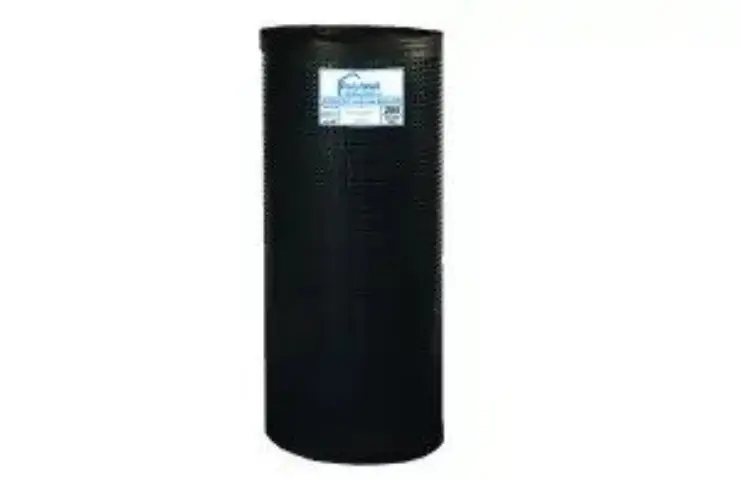
Poly Wall® Arroyo™ Drain Boards create a path for below-grade water management. The factory-applied fabric allows water to flow into the drain core to assigned drainage areas while stopping soil particle movements that can clog the core. Builders can apply Arroyo Drain Board Sheet Molded Drainage as a protection layer and drainage plane for Poly Wall® post-applied waterproofing liquids and membranes.
Poly Wall® Home Stretch™ Detail Tape
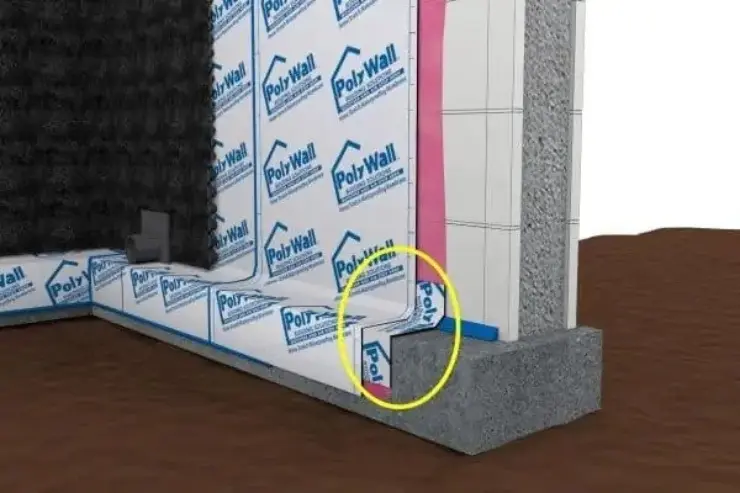
Strong, flexible, and self-adhesive Poly Wall® Home Stretch™ Detail Tape consists of a cross-laminated, high-density polyethylene (HDPE) backing bonded to a rubberized asphalt compound. Builders can use Poly Wall® Home Stretch™ Detail Tape to fabricate inside and outside corners, seal penetrations, control joints, cold joints, and damaged areas of Home Stretch™ Waterproofing Membrane.
Vapor Barriers for Above-Grade ICF Construction
The design of ICF construction creates a more effective and higher quality vapor and water barrier than house wrap products; therefore, they do not require a vapor barrier. However, above-grade ICF construction does require proper flashing at the roofline, doors, and windows with a high-quality product like Polyguard Aluma Flash™.
Polyguard Aluma Flash™ PLUS
Builders can use Aluma Flash™ PLUS as an impermeable flashing around the windows, doors, and along the roofline of an icf home or building.
The Aluma Flash PLUS Membrane offers an effective air barrier/WRB strategy for ICF above-grade construction in hot and humid climate zones 1, 2, and 3A. Apply Aluma Flash™ PLUS to clean, dry, frost-free substrate after priming with Poly Wall® Home Stretch™ Water Based Liquid Adhesive.
Self-adhering, 40-mil thick Aluma Flash PLUS offers several benefits:
Polyguard specifically designed easy-to-apply rolls of Aluma Flash for walls, with a simple-to-remove film release sheet.
Its elastomeric properties stretch and resist tearing.
It resists most chemicals.
The aluminum top allows for extensive UV exposure times after application.
Choosing a Vapor Barrier for ICF Construction
Choosing the best vapor barrier for ICF construction will protect your below- and above-grade walls from moisture infiltration and unhealthy and structurally damaging mold. Mold can lead to costly repairs, long-term damage, decreased property value, and compromised air quality.
Applying Home Stretch™ 'Peel' N Stick/ICF for below-grade ICF walls and Polyguard Aluma Flash for above-grade ICF wall openings, along with Home Stretch™ Water Based Liquid Adhesive will protect your building or home's integrity and value.
Contact the professionals at Polyguard® today for more on choosing the best vapor barrier for ICF construction.
